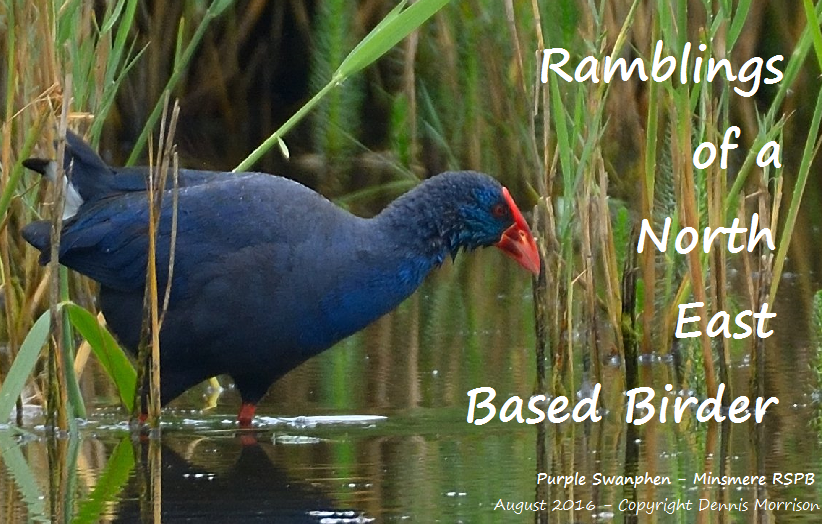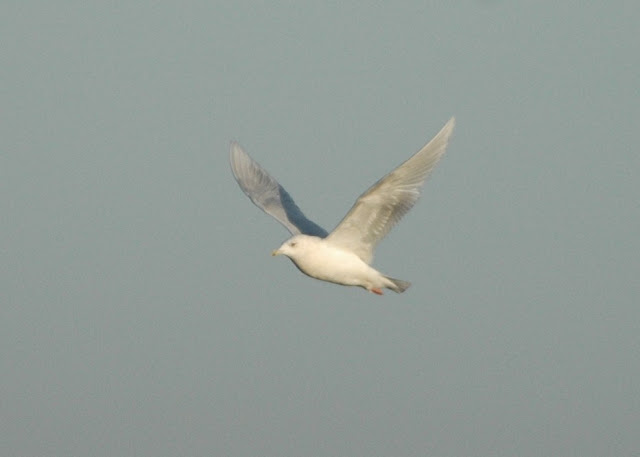(Spot the Iceland Gull - © Andrew Kinghorn)
Next stop was Coatham Wood in Darlington area for the Great Grey Shrike had been present, we were walking to the location the bird had last been seen and it flew across the path and landed in a tree close to the path. Brilliant! It showed really well for a short period....until I got my iPhone out to get some footage.
(Great Grey Shrike - © Andrew Kinghorn)
(Great Grey Shrike - © Andrew Kinghorn)
(Great Grey Shrike - © Andrew Kinghorn)
Who doesn't look a Great Grey Shrike? Next stop was Rainton Meadows DWT where a check of a reliable spot turned up 2 Jack Snipe, first time I had ever seen two sitting in the same place. One bird nicely marked but the other superbly marked. Next stop was Far Pasture NR, beware anyone going as there is a long wait to get past the traffic lights which delayed us by about 15 minutes. A fairly impressive flock of birds but the prize was a little tricky, however after a patient wait coupled with restless searching produced the Firecrest which after a short wait showed extremely well reminding me how stunning these little birds truly are! Chester-le-Street was final port of call with at least 4 Goosanders present and showing well, one bird with truly stunning peachy flush to breast and underparts. Stunning!
(Firecrest - © Derek Charlton)
Also seen during the day 2 Long-eared Owls, 1 at a winter roost, and another at a different site when I glanced up at a nest used last year a bird was sitting on the rim! Left immediately in order for the birds to settle down and hopefully nest there again this year, here's hoping. 2 Short-eared Owls also appear quite settled in an area where they occasionally breed in some years, here's hoping.
Until next time, Foghorn out!

























